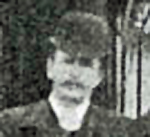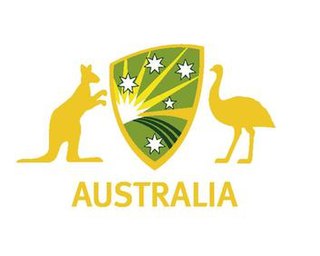
Test cricket is a form of first-class cricket played at international level between teams representing full member countries of the International Cricket Council (ICC). A match consists of four innings and is scheduled to last for up to five days. In the past, some Test matches had no time limit and were called Timeless Tests. The term "test match" was originally coined in 1861–62 but in a different context.

The Fartown Ground or just simply Fartown is a sports ground located in the Huddersfield suburb of Fartown in West Yorkshire, England and is predominantly famous for being the home ground of Huddersfield Rugby League Club from 1878 to 1992. The grounds consisted of a rugby ground, a cricket ground used by Yorkshire County Cricket Club, Bowling greens and a running track as well as a pavilion. It was the scene of many great games, including the Challenge Cup finals of 1908 and 1910, several Challenge Cup semi finals, John Player Cup finals and international matches.

Northamptonshire County Cricket Club is one of eighteen first-class county clubs within the domestic cricket structure of England and Wales. It represents the historic county of Northamptonshire. Its limited overs team is called the Northants Steelbacks – a reference to the Northamptonshire Regiment which was formed in 1881. The name was supposedly a tribute to the soldiers' apparent indifference to the harsh discipline imposed by their officers. Founded in 1878, Northamptonshire (Northants) held minor status at first but was a prominent member of the early Minor Counties Championship during the 1890s. In 1905, the club joined the County Championship and was elevated to first-class status, since when the team have played in every top-level domestic cricket competition in England.

Leicestershire County Cricket Club is one of eighteen first-class county clubs within the domestic cricket structure of England and Wales. It represents the historic county of Leicestershire. It has also been representative of the county of Rutland. The club's limited overs team is called the Leicestershire Foxes. Founded in 1879, the club had minor county status until 1894, when it was promoted to first-class status pending its entry into the County Championship in 1895. Since then, Leicestershire have played in every top-level domestic cricket competition in England.

Glamorgan County Cricket Club is one of eighteen first-class county clubs within the domestic cricket structure of England and Wales. It represents the historic county of Glamorgan. Founded in 1888, Glamorgan held minor status at first and was a prominent member of the early Minor Counties Championship before the First World War. In 1921, the club joined the County Championship and the team was elevated to first-class status, subsequently playing in every top-level domestic cricket competition in England and Wales.

Arnold James Fothergill was an English professional cricketer who played first-class cricket for Somerset County Cricket Club and the MCC in a career which spanned from 1870 until 1892. A left-arm fast-medium pace bowler, he appeared for England in two Test matches in 1889.
In English cricket since the first half of the 18th century, various ad hoc teams have been formed for short-term purposes which have been called England to play against, say, Marylebone Cricket Club (MCC) or an individual county team. The key factor is that they were non-international and there is a significant difference between them and the official England cricket team which takes part in international fixtures. Conceptually, there is evidence of this sort of team being formed, or at least mooted, since the 1730s. They have always been "occasional elevens" but, nevertheless, have invariably been strong sides. A typical example would be a selection consisting of leading players drawn from several county teams.

The Philadelphian cricket team was a team that represented Philadelphia, Pennsylvania, in first-class cricket between 1878 and 1913. Even with the United States having played the first ever international cricket match against Canada in 1844, the sport began a slow decline in the U.S. This decline was furthered by the rise in popularity of baseball. In Philadelphia, however, the sport remained very popular and from the end of the 19th century until the outbreak of World War I, the city produced a first class team that rivaled many others in the world. The team was composed of players from the four chief cricket clubs in Philadelphia–Germantown, Merion, Belmont, and Philadelphia. Players from smaller clubs, such as Tioga and Moorestown, and local colleges, such as Haverford and Penn, also played for the Philadelphians. Over its 35 years, the team played in 88 first-class cricket matches. Of those, 29 were won, 45 were lost, 13 were drawn and one game was abandoned before completion.
The 1778 English cricket season was the seventh in which matches have been awarded retrospective first-class cricket status. The scorecards of five first-class matches have survived.

The 1787 cricket season in England is noteworthy for the foundation of Marylebone Cricket Club (MCC) after the opening of Thomas Lord's first ground in the parish of Marylebone, north of London. MCC soon became the sport's governing body with the new ground as its feature venue. The first match known to have been played at Lord's was on Monday, 21 May, between the White Conduit Club and a Middlesex county team. The first match known to involve a team representing MCC was against White Conduit on Monday, 30 July. Including these two, reports and/or match scorecards have survived of numerous eleven-a-side matches played in 1787. Eleven are retrospectively, but unofficially, recognised as first-class.

The Australia national cricket team toured England in 1884. The team is officially termed the Fourth Australians, following three previous tours in the 1878, 1880 and 1882 seasons. The 1884 tour was a private venture by the thirteen players who each invested an agreed sum to provide funding, none of Australia's colonial cricket associations being involved. Billy Murdoch captained the team and George Alexander acted as player-manager. The Australians played a total of 32 matches in England, 31 of which have first-class status.

John "Jack" Crossland was an English professional cricketer who played first-class cricket between 1878 and 1887. Crossland was recognised as one of the fastest bowlers in county cricket, but critics generally believed that he threw, rather than bowled the ball, a practice illegal in cricket. Contemporaries suggest that, but for the suspicions over his bowling action, Crossland would have played Test cricket for England.

In the 1889–90 cricket season, an English team managed by George Vernon and captained by Lord Hawke toured Ceylon and India. It was a pioneering tour being the first visit by an English team to India and the second to Ceylon, following the stopover by Ivo Bligh's team to Australia in 1882–83. Vernon's team, known as G. F. Vernon's XI, was entirely composed of players with amateur status and, in the absence of professionals, none of its matches have been recognised as first-class. In all, they played thirteen matches from 28 November 1889 to 1 March 1890, starting with two games in Ceylon before moving on to Calcutta where the Indian part of the tour began in late December.
Prince's Cricket Ground in Chelsea, London was a cricket ground, created by the brothers George and James Prince as part of the Prince's Club, on which 37 first-class matches were played between 1872 and 1878. The ground was built on in 1883. The boundaries of the site, laid out on the former Cattleugh's nursery gardens, are marked by Cadogan Square West, Milner Street, Lennox Gardens Mews, Walton Street and Pont Street.
Alfred Henry Evans was an English first-class cricketer. He was a right-handed batsman who bowled right-arm fast-medium.
Derbyshire County Cricket Club in 1878 was the cricket season when the English club Derbyshire played their eighth season.
W. G. Grace is believed to have considered retirement from cricket before the 1878 season after he was seriously injured in a shooting accident the previous autumn which nearly cost him the sight of an eye. Having recovered, he reconsidered and in 1878 played in 33 matches, 24 of which are generally recognised as first-class. His main roles in the season were captain of Gloucestershire County Cricket Club and both match organiser and captain of the United South of England Eleven (USEE). In addition, he represented Marylebone Cricket Club (MCC), the Gentlemen in the Gentlemen v Players fixture and the South in the North v South series. 1878 was a cold, wet summer and not one of Grace's better seasons as a batsman, but he was very effective in such conditions as a right arm medium pace roundarm bowler and completed a sixth successive "double" by scoring 1,151 runs and taking 152 wickets in the recognised first-class matches.

Cricket Australia XI is a domestic cricket team that plays matches against international teams touring Australia. The team formerly played in Australia's JLT Cup limited-overs tournament. Before each tournament, a 14-man squad was selected from young players with state contracts, or Australian National Performance Squad players, who had not been picked in their respective states' 14-man List A squads for that season's tournament. The aim was to develop their skills against top players.
Frank Silcock was an English first-class cricketer and a founding member of Essex County Cricket Club. Debuting in first-class cricket in 1864, Silcock made 41 appearances in first-class cricket from 1864–1879, scoring 776 runs and taking 79 wickets. Regarded as one of the best professionals of his time to play for Essex, he was instrumental in the foundation of Essex County Cricket Club in 1876 and played for the county until 1887. He later stood as an umpire in first-class matches between 1889–1892.
Henry Bruen was an Irish first-class cricketer and British Army officer.











